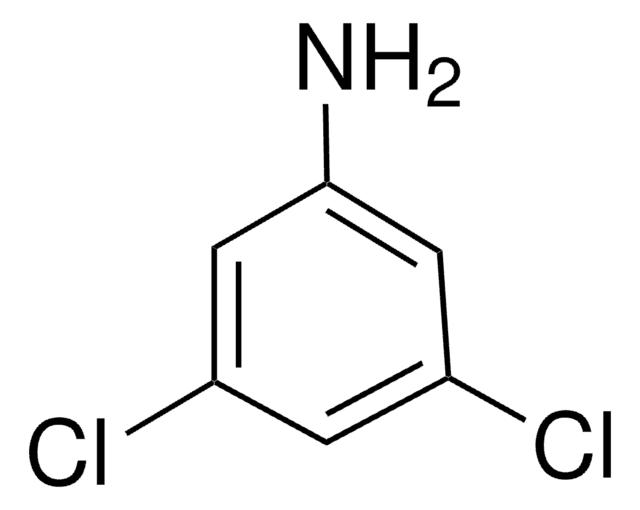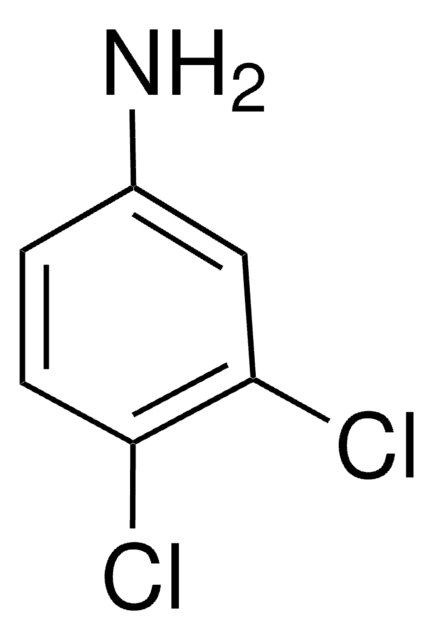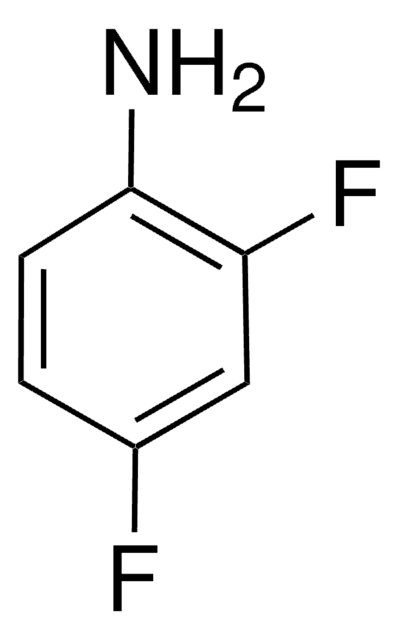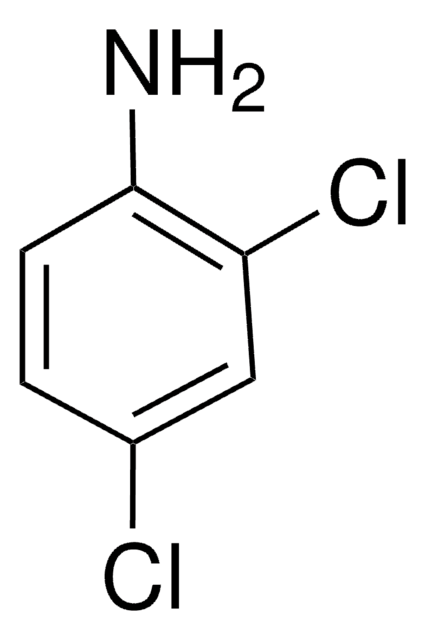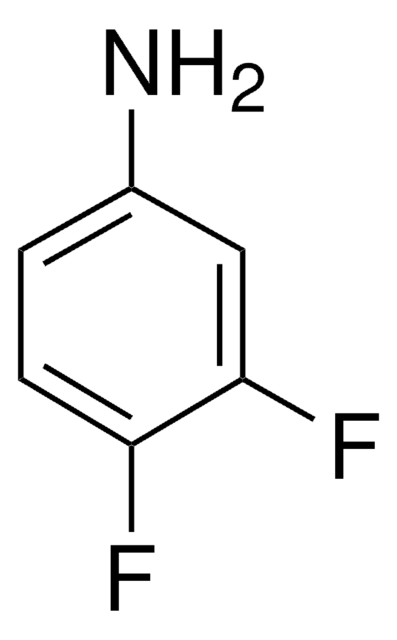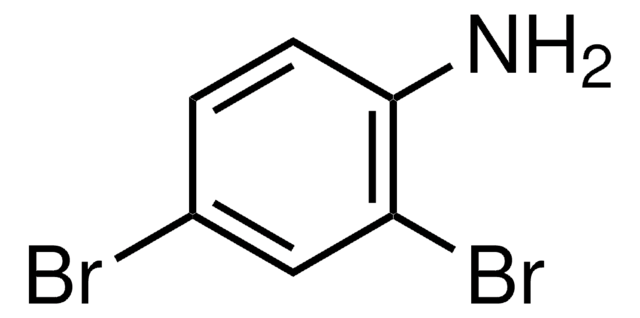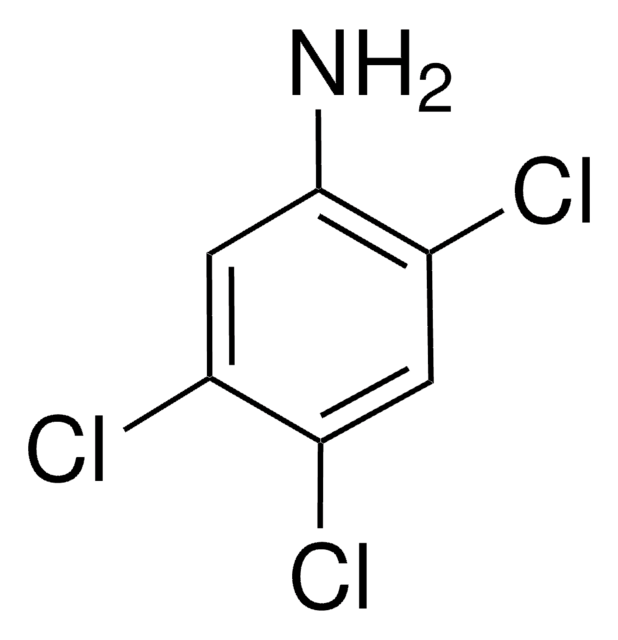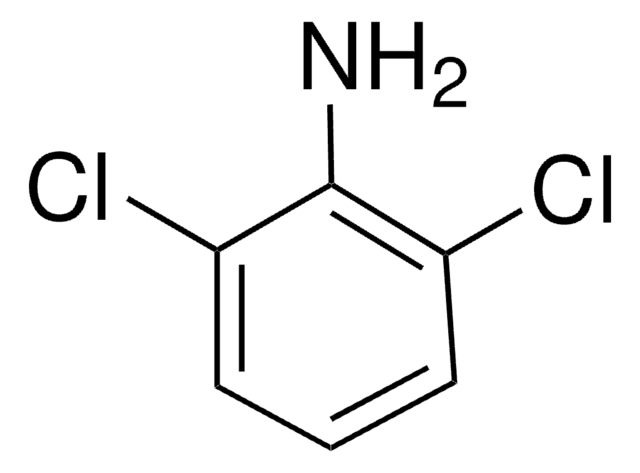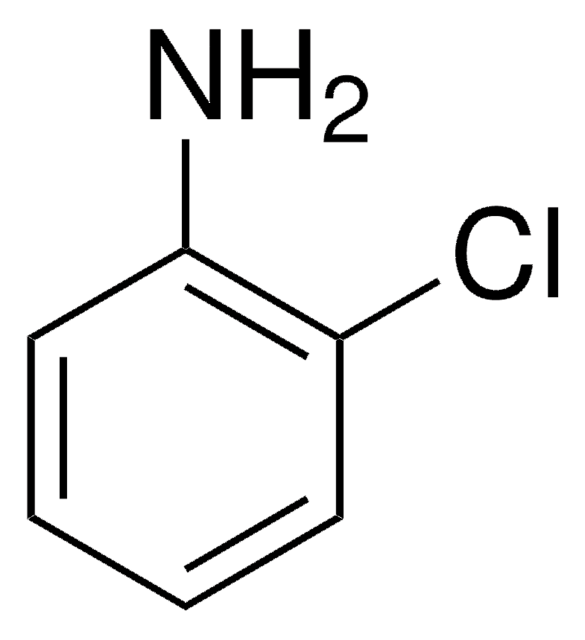112151
2,4-Dichloranilin
99%
Synonym(e):
2,4-Dichlorophenylamine, 4-Chloro-2-chloroaniline
About This Item
Empfohlene Produkte
Qualitätsniveau
Assay
99%
Form
solid
bp
245 °C (lit.)
mp (Schmelzpunkt)
59-62 °C (lit.)
Funktionelle Gruppe
chloro
SMILES String
Nc1ccc(Cl)cc1Cl
InChI
1S/C6H5Cl2N/c7-4-1-2-6(9)5(8)3-4/h1-3H,9H2
InChIKey
KQCMTOWTPBNWDB-UHFFFAOYSA-N
Suchen Sie nach ähnlichen Produkten? Aufrufen Leitfaden zum Produktvergleich
Allgemeine Beschreibung
Anwendung
- Phototransformation of 2,4-Dichloroaniline: Studies the phototransformation of 2,4-Dichloroaniline in freshwater environments, crucial for understanding its environmental degradation and implications for water purification technologies (Ucun et al., 2021).
Signalwort
Danger
H-Sätze
Gefahreneinstufungen
Acute Tox. 3 Dermal - Acute Tox. 3 Inhalation - Acute Tox. 4 Oral - Aquatic Chronic 2
Lagerklassenschlüssel
6.1A - Combustible acute toxic Cat. 1 and 2 / very toxic hazardous materials
WGK
WGK 3
Flammpunkt (°F)
239.0 °F - closed cup
Flammpunkt (°C)
115 °C - closed cup
Hier finden Sie alle aktuellen Versionen:
Besitzen Sie dieses Produkt bereits?
In der Dokumentenbibliothek finden Sie die Dokumentation zu den Produkten, die Sie kürzlich erworben haben.
Kunden haben sich ebenfalls angesehen
Unser Team von Wissenschaftlern verfügt über Erfahrung in allen Forschungsbereichen einschließlich Life Science, Materialwissenschaften, chemischer Synthese, Chromatographie, Analytik und vielen mehr..
Setzen Sie sich mit dem technischen Dienst in Verbindung.